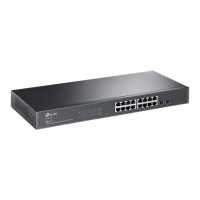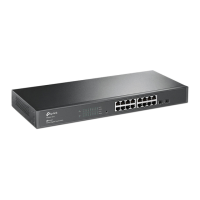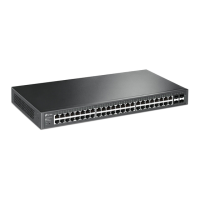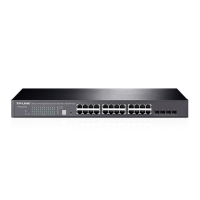Configuration Guide 182
Configuring Protocol VLAN Protocol VLAN Configuration
2
Protocol VLAN Configuration
To complete protocol VLAN configuration, follow these steps:
1) Configure 802.1Q VLAN, including creating a VLAN and setting the port type.
2) Create protocol template.
3) Configure Protocol VLAN.
Configuration Guidelines
You can use the IP, ARP, RARP, and other protocol templates provided by TP-Link
switches, or create new protocol templates.
In a protocol VLAN, when a port receives an untagged data packet, the switch will first
search for the protocol VLAN matching the protocol type value of the packet. (If MAC
VLAN is also configured, the switch will first process MAC VLAN.) If there is a match, the
switch will insert the corresponding VLAN tag to the data packet and forward it within
the VLAN. Otherwise, the switch will forward the data packet to the default VLAN based
on the PVID (Port VLAN ID) of the receiving port. When the port receives a tagged data
packet, the switch will directly process the data packet according to the processing
rule of the 802.1 Q VLAN.
2.1 Using the GUI
2.1.1 Configuring 802.1Q VLAN
Before configuring protocol VLAN, create an 802.1Q VLAN and set the port type according
to network requirements. For details, refer to
Configuring 802.1Q VLAN
.

